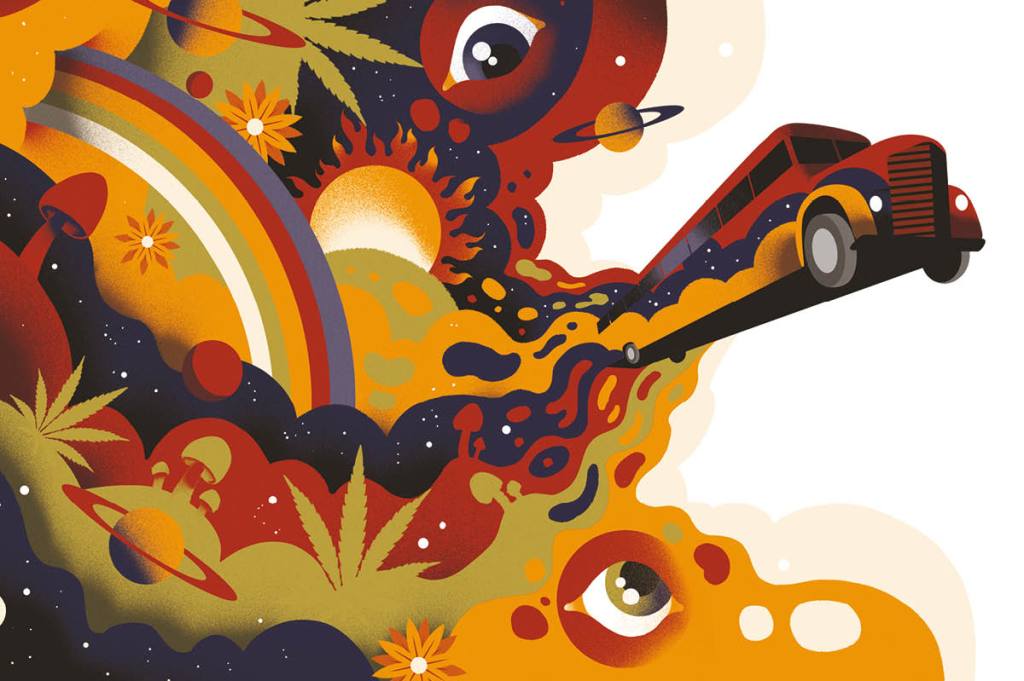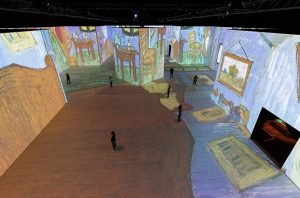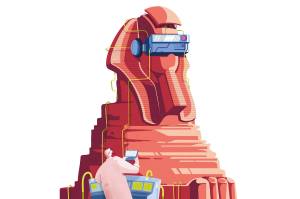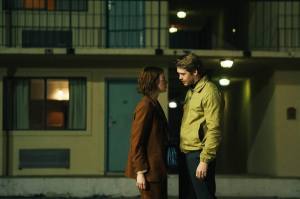Of modern America were ever to have its own “the Great God Pan is Dead” moment, it would arrive in the form of Popeyes and KFC celebrating 4/20 as a marketing boon. After all, what better way is there to signal the end of counterculture than by chomping down on some discounted fried chicken?
Devotees of the “4/20” marijuana festival, commemorated globally each year, have bemoaned a string of corporate sponsorship deals which are, they sniff, at odds with the event’s hallowed “hippie” origins. So when San Francisco decided earlier this year to cancel its annual 4/20 celebrations on Hippie Hill in Golden Gate Park, citing city-wide budget cuts and a lack of lucrative brand deals, the whole affair was a little on the nose.
Come on, man! The Haight-Ashbury area was the epicenter of 1967’s Summer of Love! San Francisco was once the counterculture capital of the world! What kind of fucked-up legacy is this? Such were the cries of a local “interfaith” religious group, hilariously called the Church of Ambrosia. The psychedelic church — which is, inevitably, “nondenominational” and promotes “all entheogenic plants, with a focus on Cannabis and Magic Mushrooms” — came to the rescue and took over the smokeout sans conglomerates. Let (chemically enhanced) joy reign unconfined.
These remaining champions of psychedelia are a rare breed these days, resurfacing only, it would seem, for their annual bash. (I can’t help wondering if the true hardcore stay cloistered in their attics the rest of the year, like more colorful Mrs. Rochesters.) This should come as no surprise. Austin Powers relegated tie-dye, flares, flower headdresses and peace medallions to the dress-up box long ago. The truth is, we’re all yuppies now and have been for a while. But is it time to reconsider the acid-inspired art of the hippies’ halcyon days as a serious artistic movement? Should we rescue it from its ridiculous stereotype, or is it best left as a symbol of a blessedly bygone era? This month marks the sixtieth anniversary of the birth of hippie culture itself. That is, at least, according to certain strains of counterculture lore. One summer’s day in 1964, Ken Kesey and his Merry Band of Pranksters boarded a 1939 International Harvester School Bus and embarked on a mind-bending American odyssey. The group set off from Kesey’s home in La Honda, California, with the goal of making it to New York.
The road trip has become one of the most iconic in modern American history — up there with Steinbeck and Kerouac. From the get-go, its anecdotal self-reportage was (rather self-consciously) destined to become mythology. The bus, hand-painted in trippy Technicolor, was christened “Furthur.” This ended up being unintentionally ironic: on its maiden voyage, it only made it as far as the first bridge on Kesey’s property before breaking down (the first of many malfunctions). The group considered it an “omen.”
The school bus, dappled in Day-Glo, was a collective experimentation in color: members of the group would walk across its top, their bare feet covered in pink, green and orange paint. It feels harsh to point out that this kind of finger- or toe-painting technique is usually reserved for children. But much of the art of the era attempted to recalibrate a sense of innate innocence through experience. Blake, you feel, would have approved.
This was certainly Ken Kesey’s view. Hot off the success of 1962’s One Flew Over the Cuckoo’s Nest, a novel inspired by his time participating in Stanford’s famous LSD trials, Kesey undertook the road trip with the intention of writing a book. But then he thought, “if Shakespeare was writing today, I don’t think he would use a quill pen” so he grabbed a tape recorder and film camera instead, wanting to see “if people talk like they do in novels.” He swiftly got his answer — “they don’t.” “Experience” became the operative word of the trip because what was happening around him “wasn’t literature anymore. This jumped off the pages and onto the streets.”
The whole journey became a kind of proto-performance art. Even the gang’s colorful nicknames read like a roster of character parts, featuring, “the Chief,” “Stark Naked,” “Sir Speed Limit,” “Generally Famished” and “Sometimes Missing.” The movie this motley crew was trying to make had no real plot but revolved around a “pretty girl” they described as “Judy Garland in a drug store.” As if The Wizard of Oz wasn’t mental enough already.
As you can imagine, the Pranksters had a merry time. With a jug of LSD-laced lemonade always on board, they were pretty much out of it. When the trip was over, they tried to piece together what little footage they had, but the audio and the video were out of sync. And so, in classic hippie fashion, they simply abandoned the project. In 2011 documentary filmmakers attempted to resurrect the reels as a feature entitled The Magic Trip. The result is unfortunate. As an origin point for the counterculture movement, however, the road trip suggested a certain apathy or lack of concern on the part of the hippies toward their creative endeavors. Thanks to the Pranksters’ boggled noggins, the “art” part often just never ended up happening. As the old joke goes, “if you can remember the Sixties, you weren’t there.”
While the sonic landscape of the Sixties was undergoing a revolution in the hands of the Beatles, the Grateful Dead, and a reluctant Bob Dylan, the hippie artist was in thrall to the music scene, producing poster art and album covers. This was partly down to the fact that most psychedelic artists didn’t seek to profit from their creations. The major poster artists of the period — Alton Kelley, Victor Moscoso, Rick Griffin, Stanley Mouse and Wes Wilson, known colloquially as the “Big Five” — created their elaborate visuals predominantly for events: concerts, sit-ins and parties where one might be subject to an electric-Kool-Aid-acid test (which is a fun way of saying LSD spiking). People would rip the posters off the wall and take them home with them simply because they looked cool, with Wes Wilson popularizing the hallucinogenic font which gave the appearance of melting in real time. The whole vibe was ephemeral.
Undoubtedly some proponents of psychedelia created truly iconic artworks. Moscoso’s 1967 poster for the Chambers Brothers depicts a woman’s face tinted orange with groovy fonts covering her oversized sunglasses. The image was recreated (or ripped off) in 2000 for the poster of Cameron Crowe’s Almost Famous starring Kate Hudson as a Seventies rock ’n’ roll groupie. Wilson’s output for the Grateful Dead skillfully incorporated the band’s memento mori tropes and symbols.
This might sound like something unique, but for the most part once you’ve seen ten psychedelic posters, you’ve seen them all. The greatest paradox of psychedelic art is that it is entirely unique and yet at the same time incredibly same-y.
And what of the “Furthur” bus? Has it assumed pride of place in the Smithsonian? Has it heck; it ended up being left to its fate in a swamp on Kesey’s Oregon dairy farm, its disrepair an apt metaphor for the entire counterculture movement. Eventually even its most avid practitioners had to leave it all behind and, well, get jobs. In 1990, Kesey tried to pull the wool over everyone’s eyes by giving another bus, this time a 1947 Harvester, a psychedelic makeover. He probably wanted to capitalize on fame and make some quick cash. This failed, and he ended his days goofing about on the internet and trying, unsuccessfully, to recapture old glories. As the old adage goes, the revolution eats itself. So, on balance, why not leave psychedelic art in its naive and slightly unsophisticated aesthetic cocoon? Its goofiness and ephemerality are what made it priceless.
This article was originally published in The Spectator’s June 2024 World edition.


















